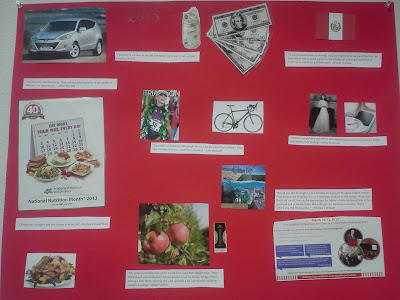May, which is Older American’s Month, is fast approaching and as an early tribute to Americans over the age of 65 years I wanted to touch on the topic of heart disease. I don’t want to do this because these Americans are more likely to have or die from the disease but because heart disease is the reason that my father never made to be and “older American.” Heart disease has been nicknamed the “silent killer” because in many cases it takes someone’s life quickly and without previous warnings. Heart disease can affect people of younger ages so it is important to know your risk and do your best to prevent this disease. For the record my father was 36 when he had his first (known) heart attack after which he had a double bypass coronary graph and he was 53 years old when he died. His father, my paternal grandfather, only lived until age 63 before he succumbed to complications of heart disease.
While heart disease is the most common chronic disease facing Americans right now it is usually accompanied by type 2 diabetes, high blood pressure and obesity. For many of us, including myself, our genetic background and family history paint a grim picture of a future without proper self care and early detection. For many others who lack a substantial family history don’t dismiss your risk either. Just from what I see in my clinic on a monthly basis I encounter patients with absolutely no family history of the disease. In fact while that can increase your chances of getting the disease that risk factor pales in comparison to diet and lifestyle. I used to think that having a family history of the disease was a terrible burden to bear but as it turns out it has been pivotal in motivating me to know my numbers (lipid panel and glucose) and maintain a healthy lifestyle. The good news is that with early detection and lifestyle modification the disease can be prevented, controlled and some cases reversed (for more information on reversal see Dr. Dean Ornish’s work).
Before getting into the important nutrition component I feel compelled to touch upon some of the lifestyle factors that can lead to the disease. This includes smoking (please quit-my father died with a pack in his pocket), being overweight, uncontrolled diabetes and a sedentary lifestyle. Basically it means don’t smoke or quit smoking, control your blood sugars if you have diabetes and use exercise as one tool in helping keep your heart strong and maintain a healthy weight. The other main tool in losing weight is good nutrition. My favorite handout to give my patients is a top 10 list which highlights the most important foods to add to your diet. Ideally by adding in healthy foods you will find that less healthy food just doesn’t have as much room in your diet and limiting them feels more natural and less like deprivation.
1. Considering all of the benefits that we hear about soy it should be no surprise to find it on the list. However you only get the benefits by swapping out soy products for meat and dairy choices (such as milk). So if you have never tried Soy milk or soy beans you may be surprised what you are missing out on.
2. Nuts and seeds-I can’t count the number of times over the years that I have had to tell the wife of one of my patients to let her husband have his peanut butter and cashews! Go for unsalted, raw nuts and eat a variety.
3. Fish Oil-First let me suggest starting out by adding in foods and if you feel compelled to use a supplement I would say that you need to discuss it with your doctor. You will find high amounts in trout, salmon, mackerel, albacore tuna and herring.
4. Monounsaturated fats-A typical Western diet provides too much Polyunsaturated and saturated fats without the much needed balance of these oils. Go Mediterranean by using olive oil as a dressing and throw some walnuts on your salad.
5. Spices-Especially garlic, are good for your heart. Try to use a variety of spices (such as turmeric, cinnamon, curry, ginger, etc) and use them whenever possible. Use them in place of salt when you can.
6. Whole fruits and vegetables-This seems like a no brainer I know, but it really is important. Fresh fruits and veggies are best followed by frozen ones. When you cook them be sure to leave a little crunch in the food which means more fiber.
7. Water-This is an important nutrient for everyone unless you are on a fluid restriction. While it may seem counterintuitive, the best way to avoid collecting fluid (especially around the heart and lungs as seen in congestive heart failure) is to drink more water. You can also benefit your heart by drinking black and green teas (which should be decaffeinated).
8. Fiber-Fiber is found in fresh fruits, vegetables, legumes and whole grains primarily. Every meal should be providing fiber. On average we need 25-30g per day. One way to get a little extra is to use a fiber supplements such as Metamucil or Benefiber.
9. Whole grains-How do we know when we are buying whole grains? Read your ingredient list and look at the first ingredient which should say-whole grain. If it doesn’t see if there are better options for you. A rule of thumb; each slice of bread should have at least 2 grams of fiber.
10. Chocolate-I bet you didn’t expect to see this on my list-did you? That’s right dark chocolate and baker’s cocoa are very good for the heart. The best way to get it into your diet is by cooking or baking with cocoa or dipping fresh fruit into melted dark chocolate as a treat.






